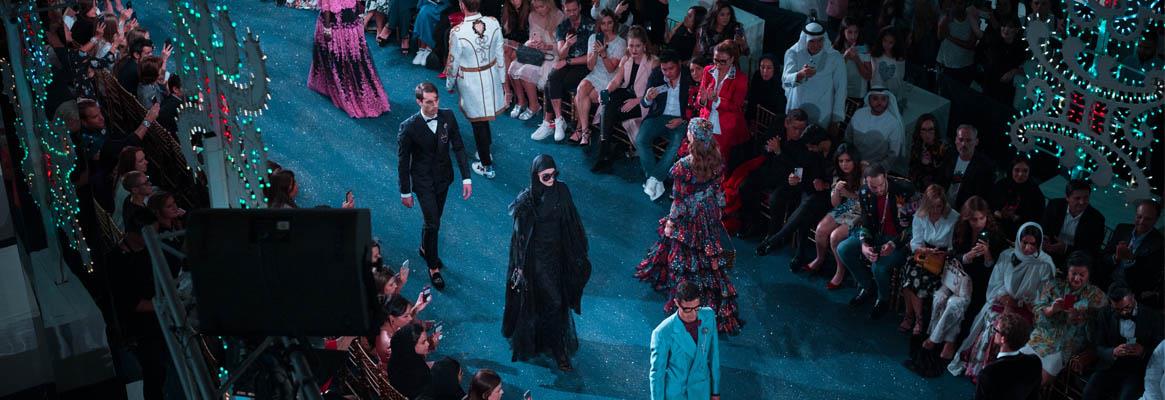What Are Digital Trade and Fashion Shows?
With consumers becoming more cautious with their money and global supply chains gone awry, it is very difficult to set a fixed strategy for the fashion industry going forward.
One thing for sure is that the Covid pandemic has brought huge changes to the way the industry currently functions. In this article, we will discuss these changes in relation to fashion shows and trade shows around the globe.
The first major fashion weeks of 2020 have had a complete digital makeover, with the inaugural London Fashion Week becoming the first of the four major fashion capitals to showcase its fully digital platform in June.
It presented an altogether friendlier and more inclusive event, in that it was gender-neutral and free for all globally. Runways have traditionally been dedicated to industry insiders, celebrities and other socialites, but with the advent of digital shows, almost anyone with an internet connection can take a front-row seat.
John Lewis & Partners and BFC even teamed up to raise money for charity by asking the nation to dress-up in an outfit that brings them joy and share videos of themselves strutting on their DIY catwalks at home. This was then made into a short film and broadcast digitally.
Each brand involved in the event had its own designer profile pages, showcasing their work, and social media/sales/press contacts. The week was jam-packed with virtual content such as interviews, short films, podcasts, digital showrooms and of course, the after-parties!
A Taiwanese-born fashion designer Malan Breton even showcased his SS21 collection through a virtual catwalk show featuring Computer Generated Imagery designed 3D models!
This is not new. After all, we’ve already seen the expanding presence in recent years of computer-generated avatars like Lil Miquela, a digital model with an impressive 2.5 million followers on Instagram who has starred in campaigns by the likes of Calvin Klein, Diesel and Prada.
Milan Fashion Week, which went digital in July, saw brands such as Gucci, Prada, and Ermenegildo Zegna appointed one-hour slots in which they presented their collections for a digital audience.
These digital fashion weeks forecast a possible new future for the fashion industry, one that takes sustainability, seasonality, democratisation and collaboration into account, as well as creative expansion.
Michael Kors feels that “the fashion calendar needs to change.” He is excited to see open dialogue within the fashion community about the calendar, and on ways to slow down the process to improve how retailers work in general.
Going digital offers access to content from a much wider group of people, not only trade but also the public. It allows brands to reach new global audiences as the platform is open for everyone to explore. It encourages creative thinking and offers an opportunity for brands to tell their story, in addition to the actual clothes and collections. Another benefit of digital is the ability to use data to understand customer behaviour, which is much more difficult with physical fashion shows.
Similarly, cancelled trade shows have been forced to pivot to entirely digital formats. The world’s prominent trade fairs such as Florence’s Pitti Uomo and Berlin’s Premium have announced upcoming digital iterations, and the Amsterdam based denim trade fair Kingpins has already debuted its first fully-digital show.
The digital experience allowed people to watch more than 200 videos, 42 PowerPoint presentations of exhibitors and more than 35 webinars from the comfort of their own homes.
As noted with fashion shows, the democratisation of these events allows companies to attend who would otherwise not be able to budget for such a trip. Other companies have stated that the money they saved from the trip (or lack thereof) could then be directed elsewhere, on research or product development, for example.
It remains to be seen whether digital will take over physical fashion and trade shows, however, it will surely breathe new life into what was a dated fashion calendar and model.
Herein lies an opportunity to transform and revolutionise how the fashion industry works in order to create positive change, both for our planet and for the millions of people who work within the industry. Bringing fashion and trade shows into the digital era allows us to rethink the fashion cycle entirely, and SynzenBe is happy to be a part of this change.
The SynZenBe Show
The SynZenBe Show enabled suppliers and brands to meet in real-time throughout a 5-day event held from July 27 to July 31, 2020. The show enabled suppliers to show their collections to brands and allows brands to connect with global leading fabric suppliers through one-on-one meetings and attend a series of empowering discussions led by industry experts.
Benefits for brands included:
• Connecting with suppliers on new developments
• Sourcing fabrics efficiently through the platform
• Enlarging your network and building relationships with responsible suppliers
Accessing the latest collections and ordering and tracking swatches in one place.
Benefits for suppliers included:
• Meeting and connecting with current and potential customers
• Showcasing your products and latest collections
• A personalised and branded digital showroom
• Enhancement of your brand presence in the market
• Building a strong network with mission-aligned brands
• Getting featured in our social media platforms
This article has not been edited by Fibre2Fashion staff and is re-published with permission from synzenbe.com







Comments